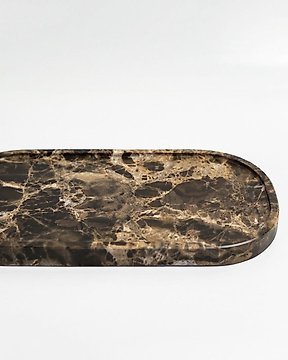
THE FOREST Art & Woodworking Studio - Mesa de centro - Madera maciza de haya
Catawiki actualiza constantemente su tecnología. Actualmente, estás utilizando un navegador obsoleto. Para optimizar tu experiencia de navegación, actualiza tu navegador.
Puedes configurar tus preferencias de cookies utilizando los botones de abajo. Puedes actualizar tus preferencias, retirar tu consentimiento en cualquier momento y ver una descripción detallada de los tipos de cookies que usamos nosotros y nuestros socios en nuestra Política de cookies.
N.º 89204983





This table centrepiece is from a collection of homeware textiles designed for the project, 'Interspecies Borders - Asking a Black Kite' by designer and visual artist, Moe Asari. This conceptual piece was part of a site specific project which explored how designing for the rewilding of the bird of prey, the Black Kite, to Millingerwaard, a nature reserve in The Netherlands developed into an investigation of interspecies borders, boundaries between humans and the Black Kite.
Research began by exploring how the Black Kite experiences territoriality, followed with examination into the relationship between human and Black Kite through existing cultural references, such as the Black Kite's habit of stealing underwear from washing lines in "A Winter's Tale," by Shakespeare and the influence of white-coloured rubbish as an indicator of territory. This resulted in opening up the interspecies borders by formulating the question, "Would you like to live here?" to the Black Kite, in the form of a design for a range of homeware textiles.
This white found lace table centrepiece was embroidered with white used parachute offcuts of ripstop and stages this question at the interspecies border: the washing line. As the Black Kite takes the white homeware textiles, items that are usually seen as tools to create comfort in the human domestic space transform into nesting material for the Black Kite.
The style aspect of the found lace table centrepiece is a reference to Tudor embellishment, as the ripstop material alludes to the outdoor trend styles of the early 2020s and the embroidery plays the role of narrating the relationship.
The table centrepiece has been exhibited in South London Gallery, London, UK as part of "Dwellings" (2024) a group show with designers and artists responding to the theme of dwellings for birds.
This piece is composed of found objects, deliberately chosen to evoke the sense of passing on elements that once inhabited a domestic space, bearing subtle traces of their prior use. These remnants of everyday life invite reflection on the continuity and shared history embedded within familiar materials.
Embroidery production was executed by SowStudio, an embroidery studio based in London.
This table centrepiece is from a collection of homeware textiles designed for the project, 'Interspecies Borders - Asking a Black Kite' by designer and visual artist, Moe Asari. This conceptual piece was part of a site specific project which explored how designing for the rewilding of the bird of prey, the Black Kite, to Millingerwaard, a nature reserve in The Netherlands developed into an investigation of interspecies borders, boundaries between humans and the Black Kite.
Research began by exploring how the Black Kite experiences territoriality, followed with examination into the relationship between human and Black Kite through existing cultural references, such as the Black Kite's habit of stealing underwear from washing lines in "A Winter's Tale," by Shakespeare and the influence of white-coloured rubbish as an indicator of territory. This resulted in opening up the interspecies borders by formulating the question, "Would you like to live here?" to the Black Kite, in the form of a design for a range of homeware textiles.
This white found lace table centrepiece was embroidered with white used parachute offcuts of ripstop and stages this question at the interspecies border: the washing line. As the Black Kite takes the white homeware textiles, items that are usually seen as tools to create comfort in the human domestic space transform into nesting material for the Black Kite.
The style aspect of the found lace table centrepiece is a reference to Tudor embellishment, as the ripstop material alludes to the outdoor trend styles of the early 2020s and the embroidery plays the role of narrating the relationship.
The table centrepiece has been exhibited in South London Gallery, London, UK as part of "Dwellings" (2024) a group show with designers and artists responding to the theme of dwellings for birds.
This piece is composed of found objects, deliberately chosen to evoke the sense of passing on elements that once inhabited a domestic space, bearing subtle traces of their prior use. These remnants of everyday life invite reflection on the continuity and shared history embedded within familiar materials.
Embroidery production was executed by SowStudio, an embroidery studio based in London.








